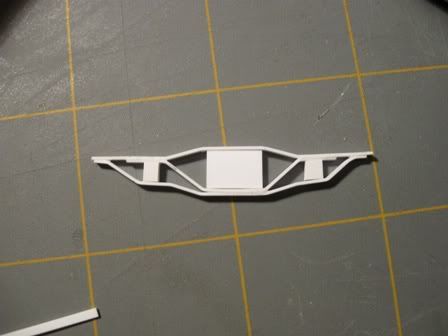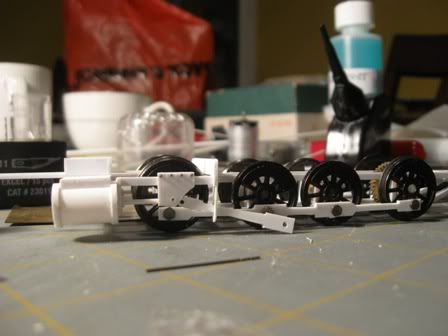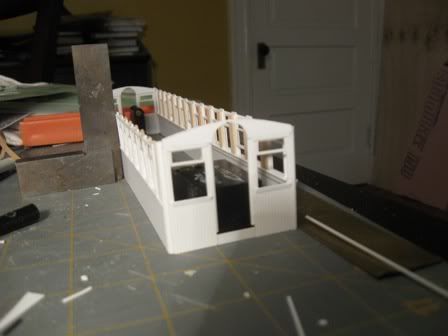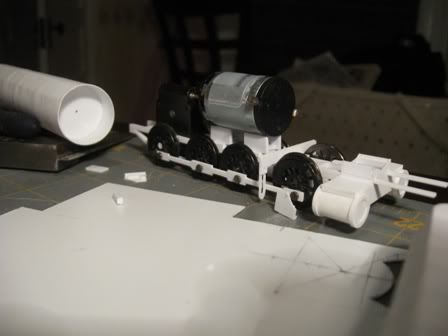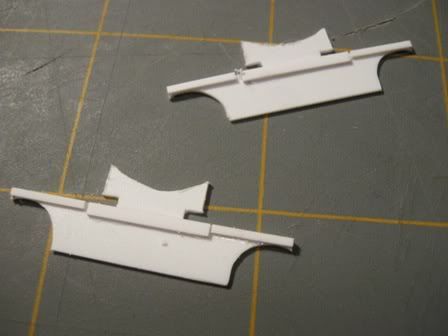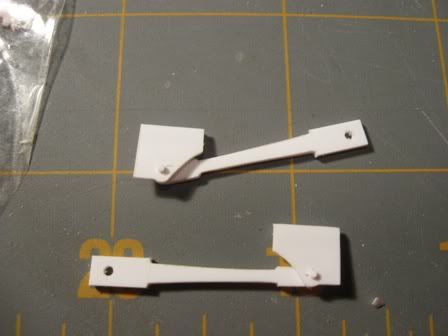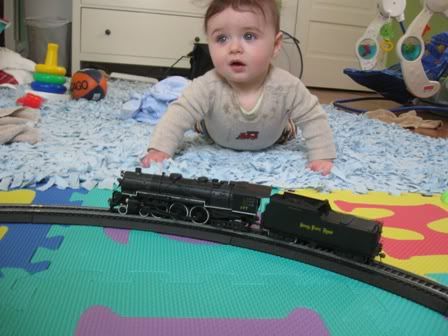As I grew older, I began to understand my schedule. 5 days a week, my father went to work. On Saturdays, he worked on the 765 and his passenger cars. On Sundays, we went to church and visited family. I would draw railroads on my children's bulletin at church...and spend the week imagining things relating to the 765. This life ended when I was 10 years old. The 765 needed some very costly 100,000 mile maintenance procedures. We continued heading up to Ft. Wayne, but then it was primarily for my dad to work on the Chittenango Falls. (http://thesouthparkline.blogspot.com/2009/02/chittenango-falls.html)
I temporarily lost my interest in trains when I began jr high sports. They were rekindled in high school after I quit the basketball team. The catalyst was an annual banquet of the 765's crew...the speaker was a long time friend of my father whom had saved the NKP 779 (sister to the 765)...the 779 was the last domestic, commercially produced steam locomotive in the USA (other nations continued to produce simpler locomotives into the 1990s).
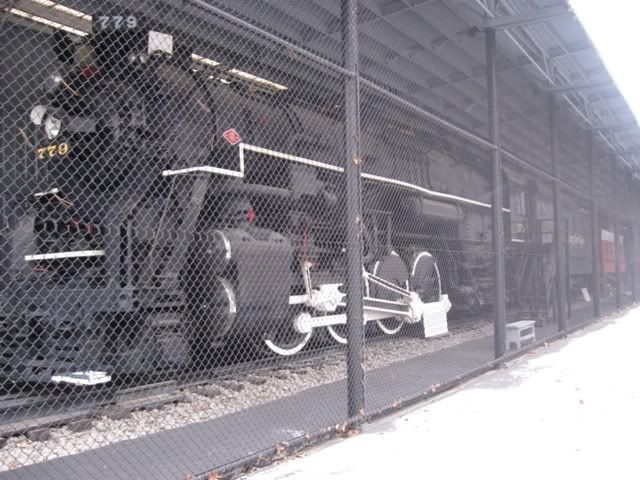
The 779's cage along with John H. Keller's caboose, NKP 1091, and NKP business car #5.
Shortly after that meeting, the 765 received a TEA grant to fund the work...essentially, $500,000 for the overhaul. This was right around 1999...only 6 years since my last trip about the 765 when I road the crew car. Being that the TEA grant was a government thing, it wasn't exactly fast...but worth it.
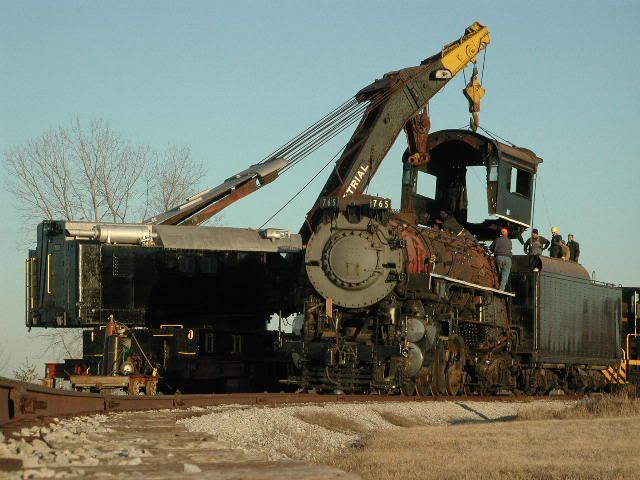
The cab being removed early in the overhaul
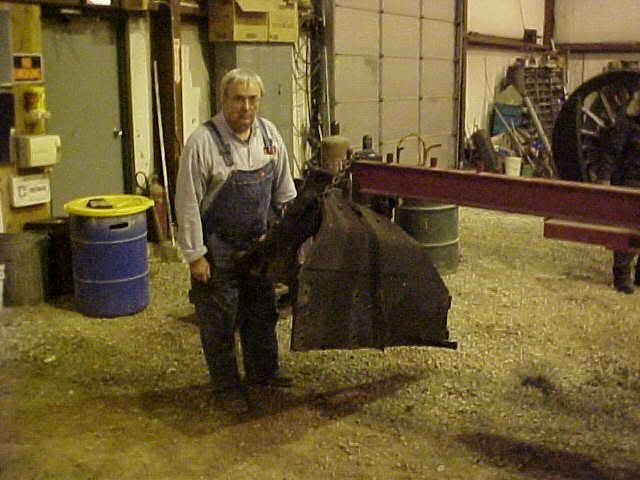
Glen Brendel has also been there since day one and probably deserves more credit for this overhaul than anyone else. Not only was he part of the original group of visionaries, but he was also the tireless one whom obtained the grant and then managed the overhaul. If you have ever enjoyed the 765 and happen to meet him, thank him.
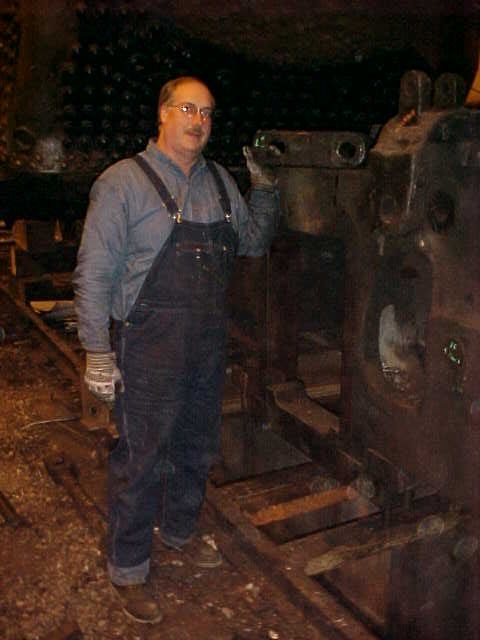
Here, you are looking at a professional railroader. Gary Bensman grew up with the Nickel Plate literally in his backyard...the small yards and wye where the NKP's Minster branch met up with the NKP's LE&W (Sandusky-Peoria mainline). Gary is a consulting steam locomotive restoration expert. I can recall a couple of his projects from the late 1980s prior to his leaving the 765 crew...such as the CB&Q 4960. The services of Diversified Rail Services were brought in to help with the restoration.
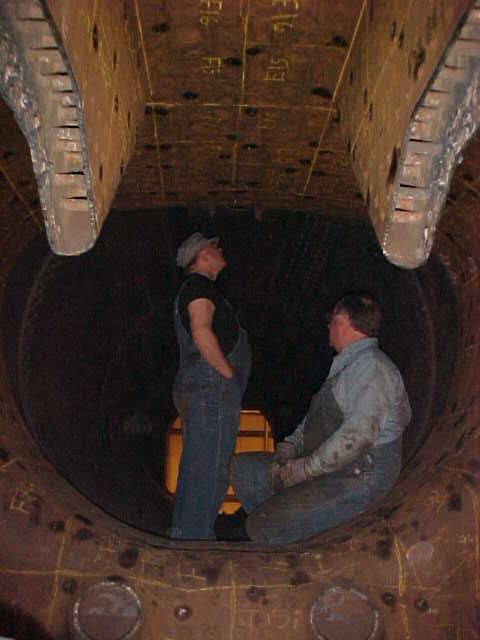
Here, Gary and Steve Winicker (sic?) are in the firebox. The Siphons have been cut out. This is were Gary is really cool to talk to, as he's restored so may locomotives that he's learned stuff about siphons which few very living people know...such as how they actually serve no purpose and hence are a liability. Steve is a regular at the shop. He has tirelessly driven a couple hours every Saturday for as long as I can recall to work on the 765.
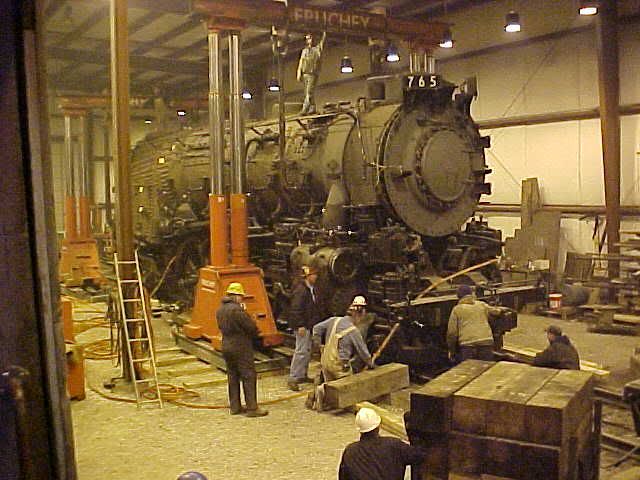
Here's the locomotive on the day of the big lift. Every 100k miles, a locomotive needs work on its running gear. The drivers are removed. The steel tires are removed from the driver centers. They are then turned on a gigantic lathe. Tires on steam locomotives are changed by placing flammable rags around the tires and lighting them on fire. The 765 has 69" drivers prior to wear and tear. Most modern freight engines had between 57" and 69" drivers...63" being the most common. The larger they are, the faster they are. Passenger engines typically had 72"-80" drivers...the largest I can recall were 86". Hence, the wheel lathes are huge...and only a few are operational in the US.
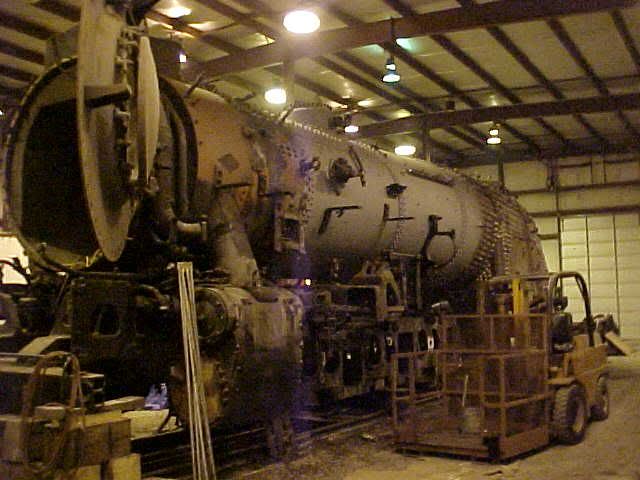
Here she is sitting on the cribbing. She doesn't weigh anywhere close to the 400tons weighs while operational.
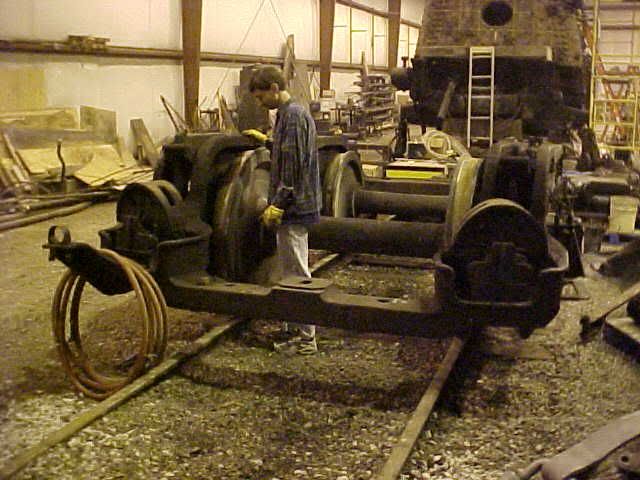
That's me admiring the trailing truck after tagging along with my dad. I'm 6'2"...but I look a bit short alongside those massive wheels.
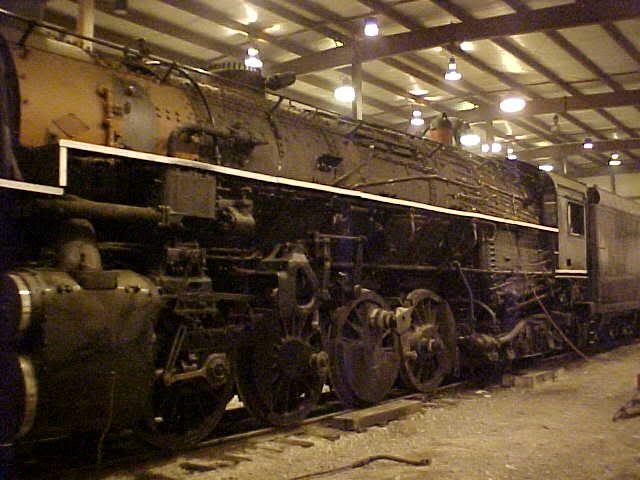
Here she is after her wheels were returned.
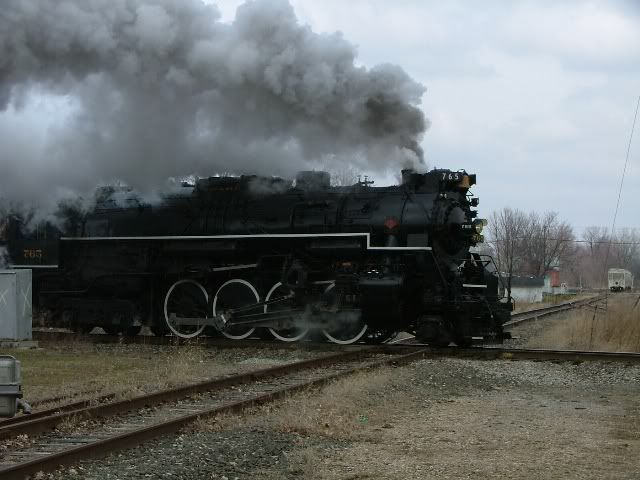
Here she was on her break in run back three years ago. She operated on the former Pennsy mainline between Van Wert, OH, and Ft. Wayne. This track is a regional railroad now, but it was once the primary New York-Chicago mainline of the worlds largest railroad.
Once more, ready to exert 4500HP and attain speeds approaching 90mph.
----------------------------------------------------------------------
This Friday was a members appreciation special. Lisa, Liam, and I left Cincinnati at 8:30am and arrived around 12:45 Ohio time...not bad considering we had to stop for Liam's lunch. We made it in time for the dedication ceremony. My dad gave a short speech and Glen Brendel did the honors with the champagne.
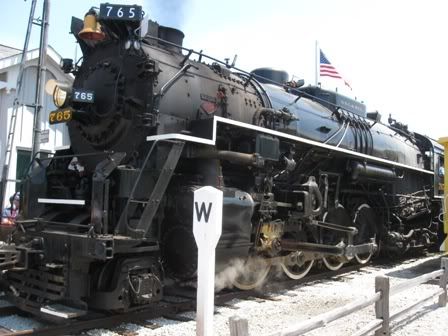
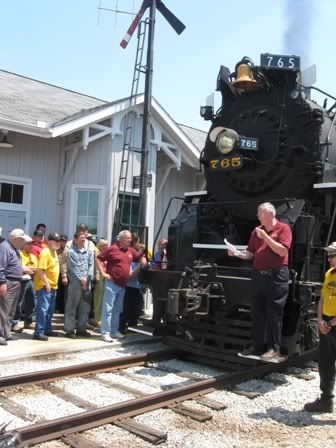
My batteries died right at the start!!! AHHHHH!!!! I didn't remember to bring spares. Fortunately, Kevin's, whom was part of the two man team who magnificently restored the group's wooden NKP caboose, wife had a couple spare batteries. I nursed the batteries since I didn't know how much life they'd have...and therefore didn't take anywhere close to as many photos as I was planning to take.
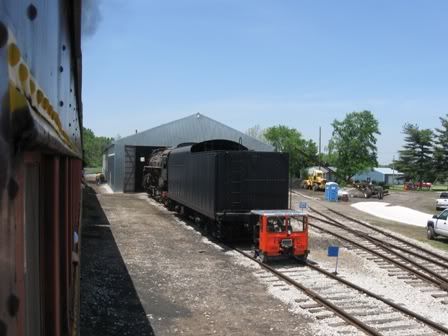
I only knabbed one photo of the local group's pride and joy...the C&O 2789. She is a sister of the 765. Six NKP, twelve C&O, and two PM "berkshires" survive...the single greatest number of examples of any steam locomotive design. Two of the NKP, one of the C&O, and one of the PM engines have run. A third NKP engine will be restored in the near future.
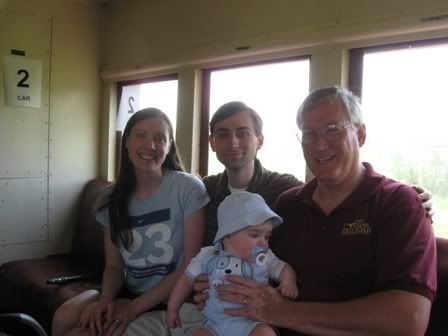
A family photo.
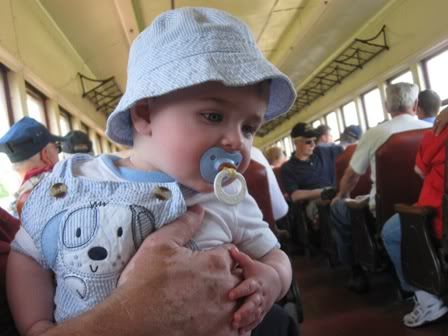
Little man was a good sport as we road an open air car which belonged to the 765 crew (FWRHS) when I was a kid. We switched to a "modern" (1954) air conditioned coach for the return trip.
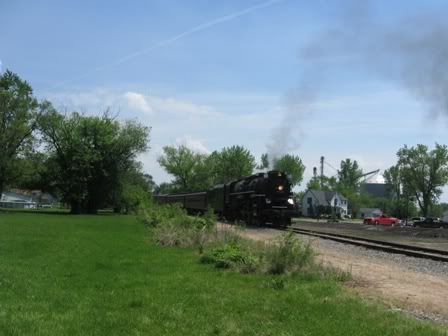
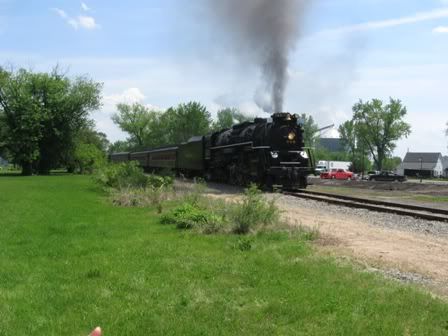
It is a time honored tradition on steam excursions to, at some point, allow everyone off the train...back it up...and blast past for the cameras.
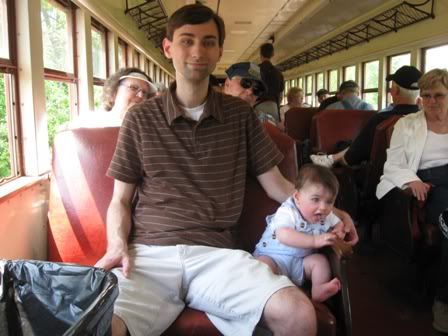
back on the train, right before changing cars.
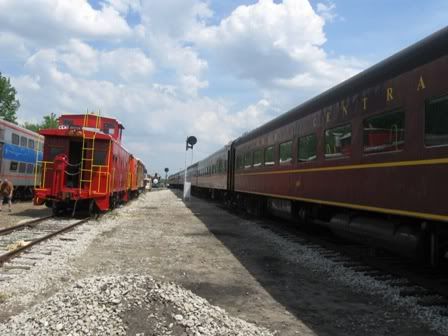
Back in North Judson at the Hoosier Valley Railroad Museum (whom provided the railroad), here's a view of the modern passenger cars...the were built for the Canadian National and served in VIA (Canada's Amtrak).
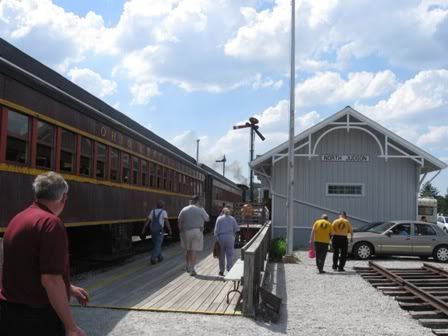
The two open window cars which formerly were owned by the 765 crew. All of the passenger cars as well as the diesel on the other end (there was no facility to move the 765 to the other end of the train for the return) were provided by Jerry Jacobson. He is well known for his acquiring and restoring equipment which he usually runs on the railroad he recently sold. Years ago, he was part of the 765 crew.
After the passenger excursion, 765 was coupled to a short string of vintage freight cars which are from the HVRM collection. A 1929 Wabash composite boxcar, a transition era MDT reefer, a 1959 N&W hopper, a 1946 NKP gondola, and a 1962 NKP caboose (built in Kenton, OH...not far from where the 765 was built in Lima...and a town where I played basketball/ran track in high school).
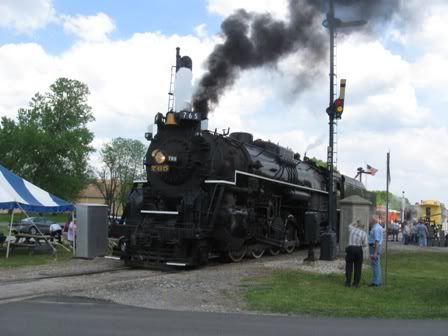
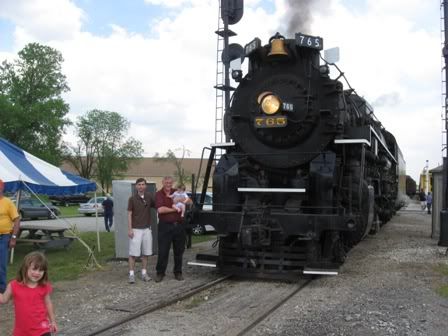
Three generations of rail fans.
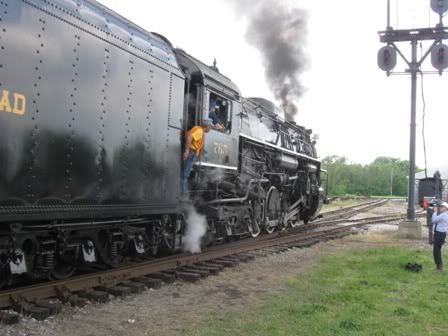
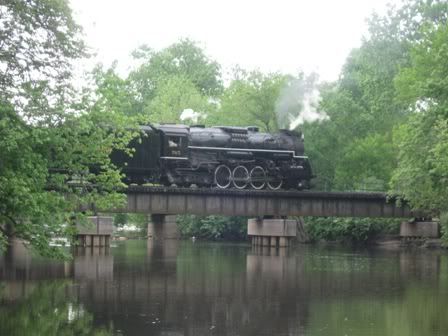
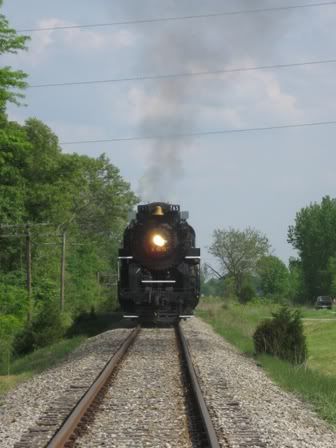

The vintage freight cars looked wonderful...so much better than modern freight cars. Two thumbs up!
And here's a compilation of videos:
